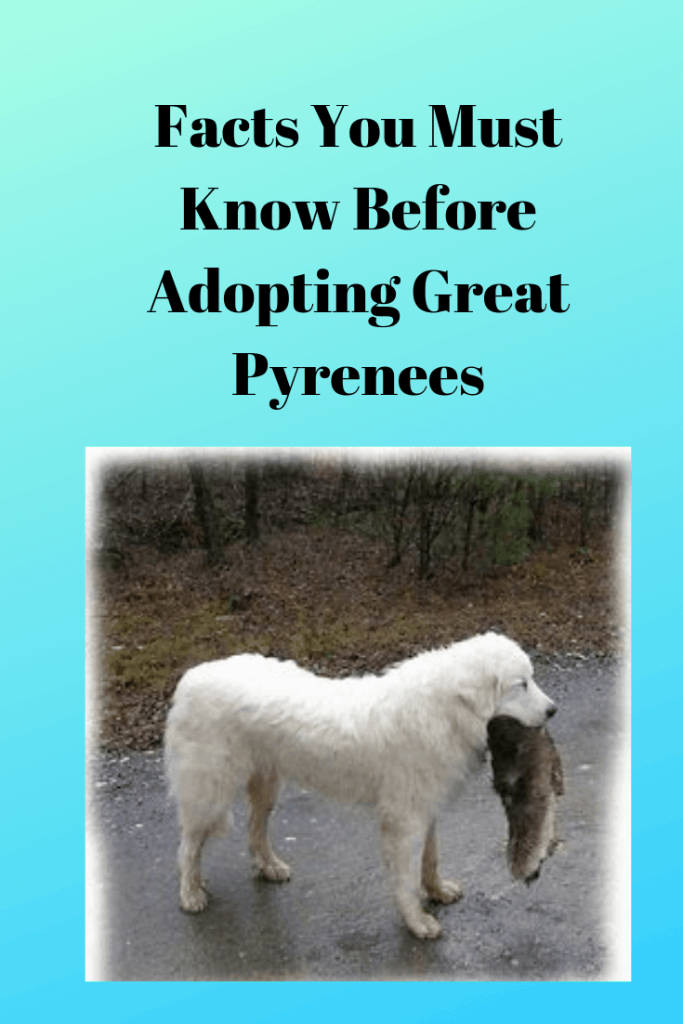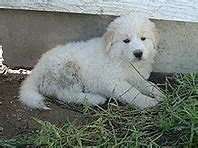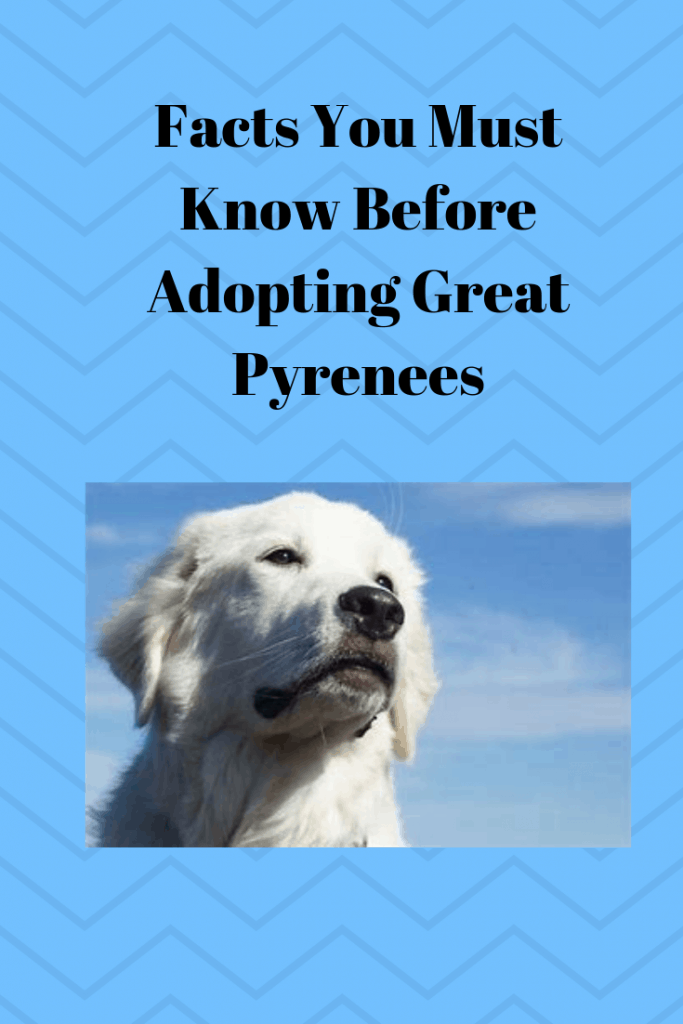The Great Pyrenees have a distinct appearance of great beauty, enormous size, and grandeur.

This large dog was bred to guard the sheep in the Pyrenees.
The male counterpart of this breed weighs on average 100 pounds and costs from 27 to 32 inches. Females, however, are typically 85 pounds and 25–29 inches tall.
Coat
The Great Pyrenees have a waterproof double coating with a long, thick and flat top layer, as well as wool and a thin inner coating.
The usually visible coat colors are white, but white with brown or gray markings is also allowed.
Activity
The great Pyrenees require a lot of exercises to keep fit. If they are not followed on guard by the herd, they should be sent daily for long, lively walks.
Temperament

The Great Pyrenees is naturally composed and tender. They are also calm, patient, and smart.
Their versatility makes them an excellent companion, guardian of livestock, and a guard dog if given appropriate socialization and training.
They have a keen sense of smell and sight, and they are always wary of their surroundings.
This breed is usually aloof from strangers and new situations.
They have a big heart for young children, and they become an excellent companion and protector if they are given due attention. Click here for Pet care products on Amazon.
Overview

A great muscular and elegant breed of dog, the Great Pyrenees was initially bred to guard the sheep in the Pyrenees.
Their weatherproof double coat allows them to endure a cold climate.
Care
The great Pyrenees require regular cleaning to keep their coats in top condition. Special care should be taken when spilling.
They usually drop the whole year, but they do it once a year.
The topcoat is often not matted unless a burr is formed.
This can cause things to get stuck on your dog’s coat.
Some owners shave their coats in the summer to prevent this, but they should beware of sunburn.
Bathing and dry shampoo should be done only when necessary.
Training
Click here to learn how you can train and develop your dog’s brain easily.

When training a dog in the Pyrenees, owners must first take into account her or her temperament.
They are smart – too smart to prefer to make their choice in almost all things.
This means that it is essential to winning the trust of this breed in the first place, and to be able to do this, justice must be shown, because they have a developed sense of justice that ripens as they grow.
The great Pyrenees must be touched and trained as young as possible.
They should get used to meet new people on a leash without showing aggression.
Because of their large size, any behavioral problems must be solved while they are still puppies.
Otherwise, they will be too old to be corrected.
Character

The Great Pyrenees, also known as the Pyrenean Mountain Dog, are one of the most beautiful breeds in the world.
They are big, muscular, and white, which indicates their elegance as a breed.
In addition to their beauty and physique, they were popular due to their competitiveness in the show-ring.
Great Pyrenees Puppy And Dog Information.
The great Pyrenees make a good guard dog and guard dog.
They fear strangers, both humans, and animals.
They need a lot of exercise and are not suitable for an apartment.
Fenced adequately in the yard or on the site will be ideal.
They may wonder, so they need to be kept under control.
They are usually good with other pets but can fight with other dogs.
They would like older children, mainly if they communicated with them at an early age.
As a reminder, never leave a child unattended with a puppy or dog.
History:
The original population that gave rise to the Great Pyrenees may come from Eastern Europe or Asia.
The ancestors of the Great Pyrenees are the Hungarians Maremmano and Kuvasz.
This dog has been used in the Pyrenees of Spain and France for almost 5,000 years as a sheepdog. The breed was not recognized by the outside world until the 19th century.
The Great Pyrenees were not used to herding sheep as the Border Collie wanted, but to living with sheep and providing protection against wolves and bears.
Approximate Adult Size
The approximate adult size (from two years old and older) of the Great male Pyrenees is from 27 to 32 inches to the withers (the highest point of the shoulder) and from 86 to 160 pounds.
The female ranges from 25 to 29 inches to withers and from 80 to 90 pounds.
This is a large dog breed. The Great Pyrenees can reach up to 130 pounds. They may be much larger than other dog breeds.
While they are friendly they may be a little large for some breeds to play with. Smaller dogs may get scared due to their size.
Special Health Considerations

Most dog breeds have specific hereditary health problems associated with this particular breed, and the Great Pyrenees are no exception, although they are considered very healthy.
Be careful with hip dysplasia (genetic weakness in the hip joint, which can lead to pain in arthritis and lameness), epilepsy (often in dogs), eyelid defects and hot spots of the skin.
This list of diseases is an informative guide only. Other conditions can also be a severe threat; please contact your veterinarian for a complete list.
She should visit the vet several times in the first year for injections, boosters, and examinations.
Then, as an adult, she must visit the veterinarian annually for inspection and testing.
When she gets older, six years and older, she should visit the vet twice a year for exams and vaccinations.
Remember; avoid feeding your dog sweets.
Grooming
Cleaning will help her maintain a clean and healthy coat, help you monitor her health more closely, and strengthen your emotional connection with her.
They need to be cleaned regularly. During this time more attention will be required.
Although their coat does not generally discolor, any bumps or debris attached to the hair can cause a mat to form so it is important to check it regularly.
You should only shower when necessary, and dry shampoo will be better if you shower more often. It is also important to thoroughly clean the undercoat to remove dead or lost hair.
Do Great Pyrenees Need Another Dog?
The Great Pyrenees may be a large dog but it is a great family dog. Many wonders if this dog needs to be around other dogs to be happy.
Interact with Other Dogs
Like any breed, the Great Pyrenees can get along well with other dogs if they have been properly trained.
They need to be socialized from a young age to play nicely with other dogs and how to play with them. They can even play with smaller dogs.
Pact Thinking
The Great Pyrenees still has a pack mentality. They are friendly and have a general liking for other dogs.
They have been used as guards for sheep and they are used to working in packs with other dogs.
The Great Pyrenees is a friendly dog, especially for its size. This breed will get along with other dogs with proper training from their human.
Great Pyrenees Behavior Problems
The Great Pyrenees is a meek and gentle dog, although it can be stubborn at times. They are intelligent and reasonable dogs.
They love being around their family and will protect the group/family at any cost.
He is an obedient dog but because he can be independent and stubborn at times, training him is not always easy.
They are good with children and get along well with cats. They are loyal and friendly dogs and can sometimes be wary of strangers and unfamiliar people.
Issues
Like many large dogs, the Great Pyrenees are prone to the most common problems all large dogs face. This includes hip dysplasia, so always make sure your dog and parents are officially examined and that they feel bloated.
They can also suffer from bone cancer and kneecap dislocation, and they can also develop skin problems in tropical or very hot conditions. They have an average life expectancy of about 10 years.
Living
All the Great Pyrenees prefer cooler climates, as they are designed to live. However, they will acclimatize as long as the weather is not too hot. Not suitable for apartment living because they need space, but you can manage to find a way to do so.
Conclusion
Although it may seem inactive inside, you need room to walk. They are best suited for a setting with a large garden.
They also need a family that can get them a lot of exercise, at least one long walk a day.
Related Articles
Learn about how to develop your dog’s brain (hidden intelligence) here.
Best seller pet products